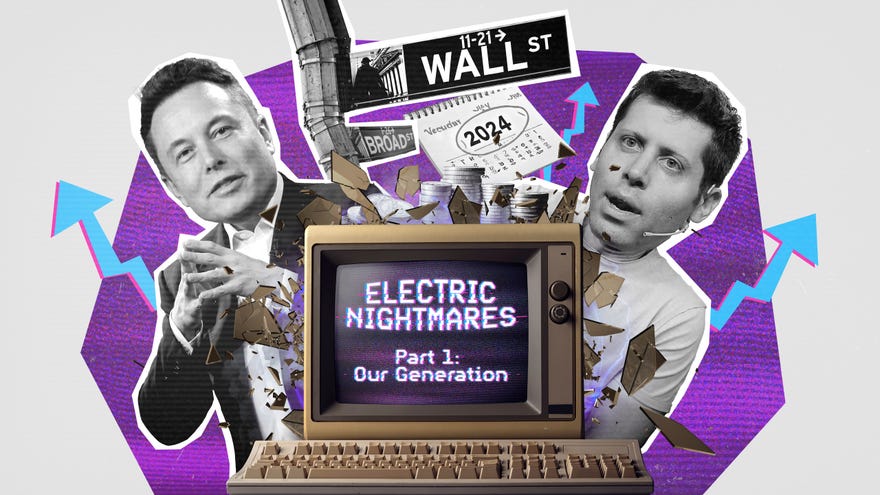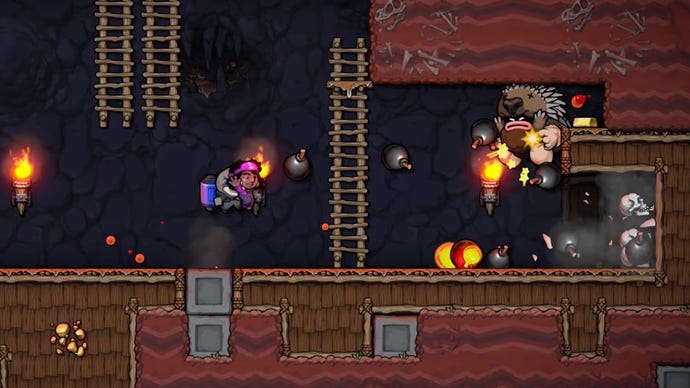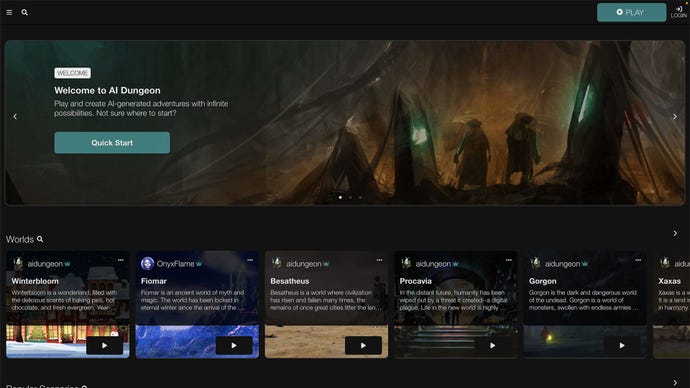HomeFeatures
To understand the future of generative AI, we need better language to describe itOur new series about generative AI and its use in games suggests some words to use
Our new series about generative AI and its use in games suggests some words to use
Image credit:Rock Paper Shotgun
Image credit:Rock Paper Shotgun

If you’ve ever tried to play a hardcoreRPGthat’s way above your brain’s pay grade, or got lost in tutorials that use complicated words and bizarre jargon, then you’ve probably felt right at home reading headlines about AI recently. Why are people angry that this character has seven fingers?Why does Nvidia want me to talk to a robot about ramen? Why is everyone saying AI is smart when it still can’t manage its Classical Era luxury resource economy in Civilization properly? In this new series, we’re going to explore what ‘generative AI’ is, why it’s arrived now in the games industry, and what it might mean for people who make, write about and play games in the future.
In myday job, I’m a Senior Lecturer at King’s College London’s Department of Informatics, where I lead a research team dedicated to studying how AI might change creativity and games. You might have seen some of my research on RPS before, such as the game-designing AIAngelina. I’ve been doing this research since 2011: beforeAI Dungeonlaunched on Steam; beforeOpenAI Fivetook on DOTA 2’s world champions; before Lee Sedol’s historic loss toDeepMind’s AlphaGo. When I started studying AI as a PhD student, it was a field very few people were interested in, and the idea of studying AI for games or creativity was a niche within a niche. Since then, I’ve watched as public opinion has gone from one extreme to another, and now the main problem I face as a researcher isn’t people underestimating what AI can do, but ratheroverestimating it. In this four-part series, we’re going to try to find that middle ground between the extremes, and from there see what’s really on the horizon for the games industry.
First, an important question: what does ‘generative AI’ mean? That’s something even I’m not always sure about. As AI has become more popular, we’ve lost our grip on what most of its terminology’s come to define. Even the term ‘AI’ itself has lost all meaning as it’s been applied to every technology product in existence. Did you know you can get gamer headphones with “AI Beamforming” technology in them, for example? Generative AI might be especially confusing for people who play PC games, too - weren’t games likeSpelunkyand Minecraft usingprocedural generationto make their levels and worlds back in 2010? Heck, weren’t Rogue andEliteusing it in the 1980s? Isn’t thatgenerative?
Spelunky 2 is a 2D platformer that uses procedural generation to present new challenges to its players. |Image credit:Mossmouth

It might seem like generative AI is already taking over the games industry. Earlier this year, GDC released their annualState of the Industry survey, in which they claimed that 31% of surveyed developers used generative AI in their workplaces, and 49% of studios were using it. But ‘generative AI’ can describe anything from people using AI image generators to create every single art asset in their game, down to people who just useChatGPTto write their emails. Generative AI is not a single concept, and using it for one area – such as programming – might feel and work very differently to using it in another – translating dialogue, say. Regardless of any studies, headlines or big press releases, generative AI is a big, messy, controversial idea, and it won’t affect all parts of the games industry in the same way.
To help you think about some of these differences, I’ve got some suggestions for new words we can use to talk about generative AI systems. The first is ‘online’ versus ‘offline’ systems (which I’m borrowing fromresearch on procedural generation). Online systems generate content while you’re playing the game –AI Dungeonis an example of an online generative AI system, because it writes in real-time while you’re playing. Offline systems are more for use during development, like the use of generated AI portraits in the indie detective gameThe Roottrees Are Dead. Portraits and other artwork were generated using Midjourney and added to the game, but the game itself doesn’t generate anything. As you’d expect, online systems are a lot riskier because developers can’t test every possibility in advance, but they can also lead to more exciting and innovative game designs. Offline systems are easier to test, secure and validate, which might make them more popular with big studios who can’t afford to take risks with unpredictable technology in live games.
Released in 2019, AI Dungeon is a text-based, AI-generated fantasy sim that lets players create and share adventures using custom prompts. |Image credit:Latitude

Another way we can categorise generative AI systems is between “visible” and “invisible” systems. Visible systems produce content that you directly feel the effect of – things like art or music - while invisible systems generate content that the average player might not be as aware of. For example, some programmers useGitHub Copilot, a generative AI system that can write small sections of program code. If someone used Copilot to write the multiplayer networking code for your favouriteMMORPG, you almost certainly would never hear about it (unless something went wrong). The same goes for many aspects of game development that we don’t necessarily see directly – if the finance department uses ChatGPT to compile their monthly reports, for example, or if concept artists produce some pre-alpha artwork usingDALL-E. The visibility of a generative AI system may be increasingly important as backlash against the use of AI tools rises, because developers may feel safer employing generative AI in less visible ways that players are less likely to feel the presence of.
But that kind of hindsight is still a long way off for generative AI, and in the meantime there’s a storm of court cases, hopeful start-ups and confused game design pitches for us to weather. Tomorrow, we’ll sail headfirst into the choppy waters of ethics and the law. Until then, keep counting those fingers, and don’t talk to any strange robots.
In Part 2, The Art Of The Steal, we discuss whyprotecting art from generative AIhas never been more vital or important.